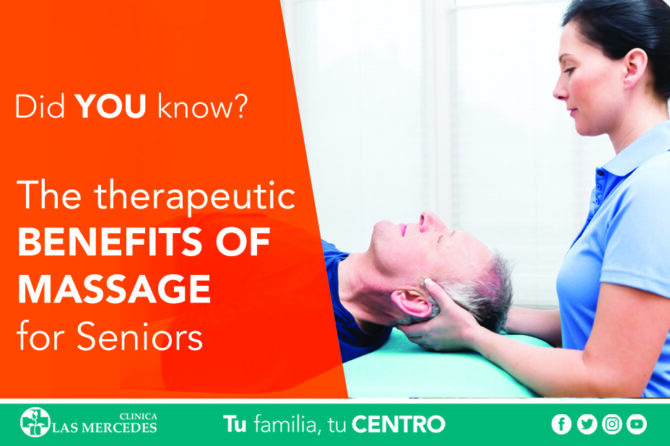
The Therapeutic Benefits Of Massage For Seniors
As we grow older, our bodies can start slowing down as we begin experiencing some of the pain and stiffness that comes with aging. It may be difficult to stay involved with all the physical activities you enjoy due to chronic conditions like osteoarthritis or ailments like Parkinson’s disease. However, staying physically active is vital for seniors because regular exercise can help improve mobility, flexibility and even your mental health.
Massage Therapy for Seniors
According to a survey conducted by the American Massage Therapy Association, approximately 9 million people over age 55 had a total of 39 million massages in the last twelve months, mainly for medical purposes. Massage therapy for seniors can be an effective, non-invasive way to help alleviate some of the symptoms of many age-related conditions, especially when used to compliment traditional medical services. With regular massage, seniors can experience an improved quality of life, increased energy levels and feel younger and healthier overall.
Massage therapy offers numerous benefits to the entire body. It helps ease joint and muscle pain and can even reduce the increased levels of stress that tend to come with aging. The massage techniques utilized for seniors include lighter, gentle stroking and kneading as well as application of pressure to specific points on the body. Even the gentlest massage has proven effects on the nervous system and blood circulation, two of the most vulnerable systems of the body that feel the effects of aging.
A typical massage for a senior usually involves a short session lasting around thirty minutes. Soothing hand motions help improve blood circulation, especially in diabetic feet, and relieve muscle tension while relaxing the body and mind.
Senior Massage Benefits
Massage therapy for seniors has been proven to have positive effects on:
- Pain due to osteoarthritis. A study showed that seniors who utilized massage as part of their treatment for osteoarthritis had less pain and stiffness and improved physical function over the course of a few months.
- Sleep habits and quality of sleep. Seniors who receive weekly massages report that they are sleeping more deeply and for longer lengths of time. This results in an overall feeling of better health as the body is being allowed more time to repair itself.
- Agitation due to Alzheimer’s disease. Studies have shown that slow-stroke back massage on Alzheimer’s patients helps alleviate some of the agitation expressions that come with the disease, like wandering, pacing and resisting.
- Alleviating depression. Touch has been proven to provide comfort to the elderly- especially since so many of them are deprived of it- which can help improve mental health.
- Physical and mental relaxation. Massage has been shown to decrease the unhealthy buildup of cortisol, known as the “stress hormone,” in the body, allowing the body to enter a rest and rejuvenation period.
- Quicker healing from injuries or illnesses. As we age, our joints and muscles tend to tighten, which can make it more difficult to heal from an injury because our range of motion is restricted. Massage therapy keeps muscles, connective tissues, joints, tendons and ligaments more fluid and even less injury-prone in the long run.
Try incorporating massage into your healthcare routine to see what benefits and relief you begin to experience yourself.
Leave a reply


It’s good to know that therapeutic medical massage can help solve some sleeping problems for seniors. My grandfather has been suffering from insomnia from time to time and it might get detrimental for his health if this keeps up. I hope that I could schedule an appointment for him soon.
ReplyMy grandma told me that her back pain is getting worse, that is why I thought about looking for a massage therapist online. It such a relief to know that this alleviates joint and muscle pain and lessens the high-stress levels that come with aging. Perhaps, I shall consider asking some of my firneds and relatives for referrals.
ReplyI like your massage tips. I need to get a massage for my back. It hurts when I sleep.
ReplyIt got me when you said that pain is inevitable as we grow older. As you said, exercise can help improve flexibility and mobility for seniors. My husband and I want our senior parents to improve their living experience with us. I guess we should look for a massage therapist on Friday that can help them relax their bodies and minds through Thai massage for an hour.
ReplyA combination of tantric massage, mindfulness, and bodywork, this holistic therapy works with the whole body, mind and sexual energy in a powerful way. Get support with sexual dysfunction issues such as erectile dysfunction, premature ejaculation and vaginismus, relax and open up to more pleasure. Learn to re-direct sexual energy through the body. Heal from sexual and other traumas.
Reply